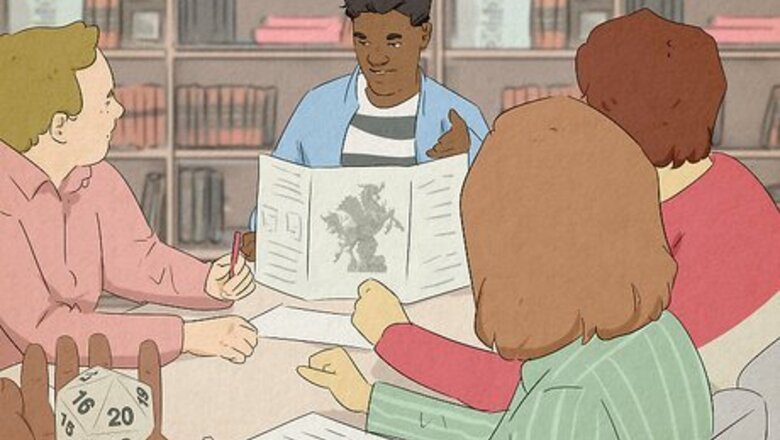
views
- True neutral is one of nine alignment types originating from D&D, defining a character’s moral perspective, beliefs, and actions.
- True neutral characters have no preference toward good, evil, law, or chaos. They’re primarily self-interested and don’t commit to specific moral codes.
- Some true neutrals (like druids in D&D) believe that good, evil, law, and chaos are all necessary for the universe to function because they balance out.
What does “true neutral” mean?
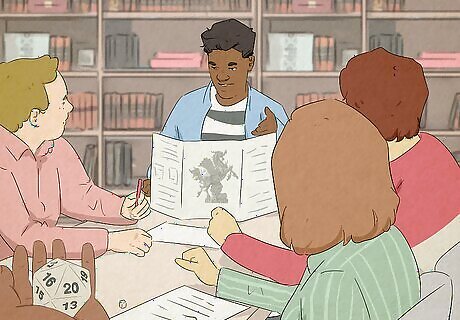
True neutral is a character alignment often used in roleplaying games. In the Character Alignment system, there are two axes: good to evil and lawful to chaotic. True neutral characters (also simply called “neutral” characters) are defined by their neutrality on both axes. They don’t lean toward any extreme (be it good, evil, law, or chaos) and actively seek to maintain balance in their lives. The Character Alignment system originates in Dungeons & Dragons and is most commonly used in D&D as well as similar games like Pathfinder. True neutral character examples: Treebeard (Lord of the Rings), Horace Slughorn (Harry Potter), The Watcher (Marvel), Lara Croft (Tomb Raider), Booker DeWitt (BioShock), and Tom Bombadil (Lord of the Rings).
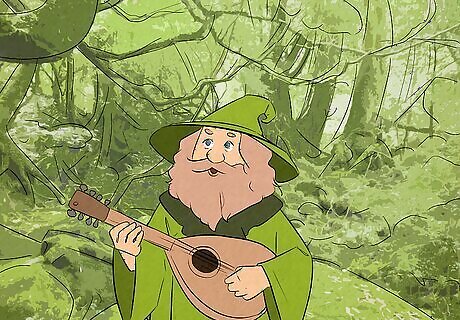
True neutral is also a philosophy that values both harmony and freedom. A true neutral person believes that generosity and selflessness are just as valid as egoism and self-centeredness. They believe that people should be free to pursue reasonable self-interests, balancing their ambitions and personal freedom with the greater needs of society and striking a balance between the two. True neutral philosophies are often connected to the concept of ethical equitism. Ethical equitism is the idea that people should do as little harm as possible to others while pursuing their own interests and minimal harm to themselves while helping others. True neutral philosophers believe that the universe is spiritually balanced. They also believe in moral relativism—the idea that there are no universal morals, so all societies should accept one another’s different perspectives. True neutrals tend to advocate for a system of government that lets people pursue their own interests as long as they don’t infringe on other people’s rights and a system of justice that’s fair, impartial, and applicable to all.
What is the Character Alignment system?
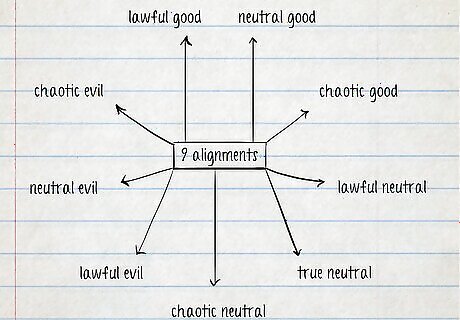
Alignments are used to categorize D&D characters by their moral beliefs. The Character Alignment system represents a character's perspective on good versus evil, law versus chaos, and neutrality, creating 9 alignments in total: lawful good, neutral good, chaotic good, lawful neutral, true neutral, chaotic neutral, lawful evil, neutral evil, and chaotic evil. Law measures a character's adherence to a specific moral code. Lawful characters are principled, reliable, and obedient to authority. Chaos represents a character's desire for freedom and distaste for societal restrictions and laws. Chaotic characters are adaptable and sometimes reckless. Good represents a character's altruism and respect for life. Good characters are compassionate and self-sacrificing. Evil implies that a character is self-serving to the point of oppressing, harming, and killing others. Evil characters may act from a sense of duty, or for their own enjoyment. Neutral characters are morally gray. They aren’t selfless like a good-aligned character, but also aren’t predatory enough to be evil. Similarly, they don’t inherently follow laws but aren’t predisposed to chaos either.
True Neutral Attributes & Behavior
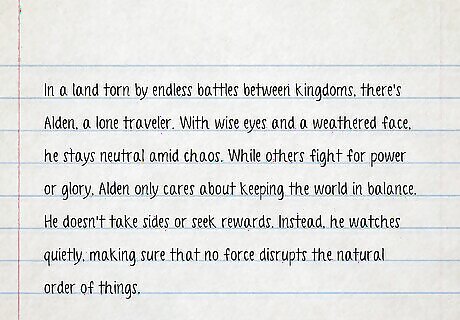
True neutral characters believe in absolute neutrality. To them, everything that exists is part of a greater whole, necessary to keep the universe functioning as it should. Good, evil, law, and chaos naturally balance one another out; none of those extremes are “right” or “wrong” because there can’t be one without the other. They remain neutral, preferring not to take sides or lean too far toward good, evil, law, or chaos. To them, all other alignments are part of a greater system that evens itself out naturally; while there’s often conflict between evil, good, law, and chaos, those conflicts ultimately keep each opposing force in balance. For example, druids are often true neutral in D&D because their loyalties lie with protecting the natural order of things and keeping the world in balance.
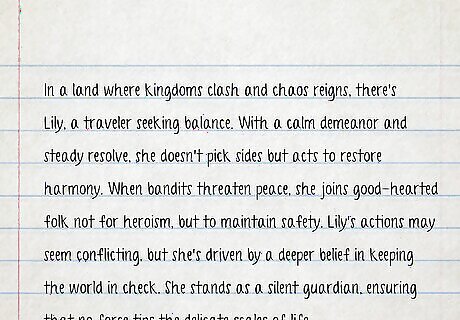
True neutrals strive to keep balance and maintain the status quo. Since true neutrals believe that good, evil, law, and chaos are all fundamentally necessary, they also believe that none of those forces should ever overtake another or become too predominant. If a true neutral character feels there’s an imbalance, they might take whatever action they feel is necessary to fix it and restore balance to the world. A true neutral character might appear to lean toward different alignments in life when they’re really just acting on their belief that the world needs to be rebalanced in some way. For example, a true neutral character might stand with good-aligned characters to fight a group of dangerous bandits—not because it’s the “right thing to do,” but because their immediate safety is threatened.
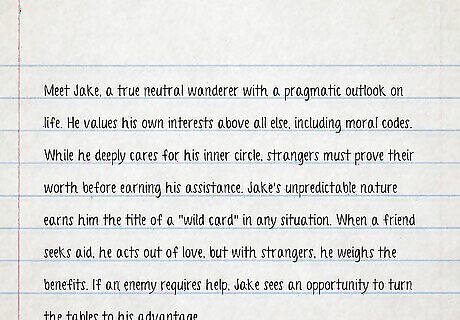
They tend to be interested in their own well-being. True neutral characters are more concerned about themselves (and the people who can help them achieve their goals) than acting according to a specific moral code. That said, they’re also not totally selfish; they care for their family and friends and might go out of their way to help those people—but probably wouldn’t do the same for a stranger. True neutrals are sometimes viewed as “wild cards” because they act out of self-interest and aren’t typically aligned with either the heroes or villains of a particular situation. For example, if a close friend asked for help, the true neutral would likely agree purely out of love and affection for them. On the other hand, if a stranger asked for help, the true neutral would stop to weigh the pros and cons of lending a hand. They might also ask, “What will I get out of it?” If an enemy needed help, the true neutral might even take advantage to get the upper hand against their enemy.
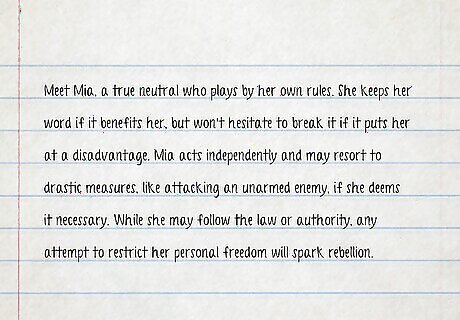
They may only keep their word if it benefits them. True neutrals are independent thinkers; they make their own decisions in the moment and rarely feel compelled to act according to a code of “honor.” So, if it’s in the character’s best interest to keep their word, they will. However, if they feel like keeping their word would put them at a disadvantage, they’d choose to break it. For example, a true neutral character might attack an unarmed enemy (or kill them) if they felt it necessary. True neutral characters also have no problem following the law or responding to a higher authority—but if that authority started restricting their personal freedoms, the true neutral character might rebel.
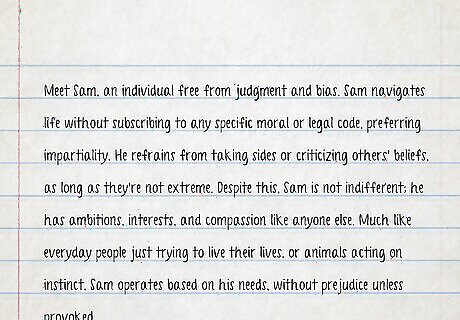
True neutral characters are nonjudgmental and free of bias. They don’t commit to any particular moral code or legal system, preferring instead to remain unbiased. Thus, they often refrain from taking sides or passing judgment on other perspectives and moral codes so long as the beliefs in question aren’t overly extreme. Remember: true neutral characters aren’t totally ambivalent! They have ambitions, interests, and desires like any other character, as well as compassion. Many humans are considered true neutral (especially in games like D&D) because they’re simply trying to live their lives. Animals are also considered true neutral because they have no inherent bias; they act according to their needs without prejudice unless provoked.
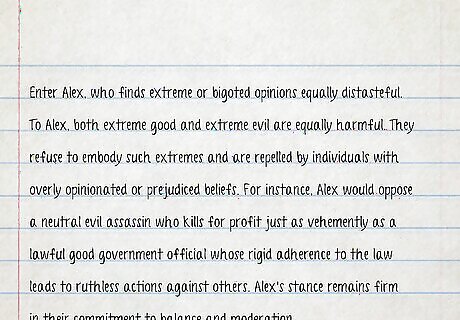
True neutrals are offended by extreme or bigoted opinions. To some true neutral characters, an extreme good-aligned person is just as harmful as an extreme evil-aligned person. They don’t believe in embodying extremes, so they tend to be repulsed by anyone whose philosophies are too opinionated (or downright bigoted). For example, a true neutral would likely be opposed to a neutral evil assassin who murders for money. However, they might respond just as negatively to a lawful good government official whose zealous devotion to upholding the law makes them act ruthlessly toward others.
Playing or Writing a True Neutral Character
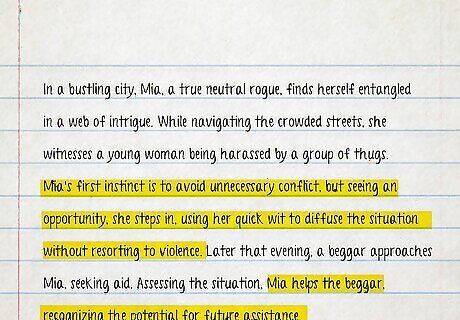
Values True neutral characters have values—but where good-aligned characters might value helping others regardless of the cost and evil-aligned characters might believe in gaining power no matter what it takes, true neutrals are more balanced. For example, if you’re playing a true neutral character, they might: Avoid lying unless it’s necessary. Refuse to murder or kill any innocents. Help people in need if there’s a benefit to doing so or if those people helped them. Follow the law unless there’s an advantage to breaking the law (without hurting other people). Hurt someone who harmed them first. Chase their own ambitions so long as it doesn’t hurt anyone else. Similarly, your true neutral character might believe it’s wrong to: Take sides in a conflict that doesn’t affect them or force others to take sides. Neglect a friend in need. Kill, unless it’s for survival. Show mercy to a dangerous enemy. Torture or hurt someone unnecessarily.
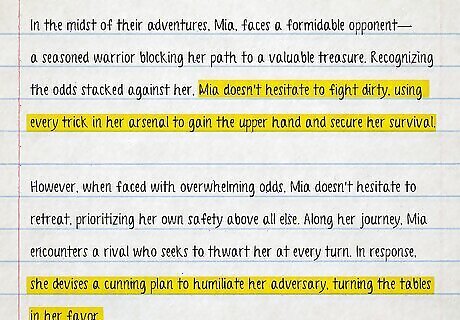
Adventuring actions Not sure what your true neutral D&D character might do when out adventuring or how they might react in different situations? Generally, a true neutral might equate “honorable” actions with survival and freedom, while they might steer clear of actions that they perceive as too altruistic or, on the other hand, selfish. For example, your true neutral character might do things like: Fight dirty to defeat a powerful opponent. Run away from a fight in order to survive. Humiliate or prank an enemy. Then, they might avoid actions like: Letting an enemy attack first in a fight. Attacking a person who gave them food and water. Surrendering to an enemy or letting themselves be taken prisoner.
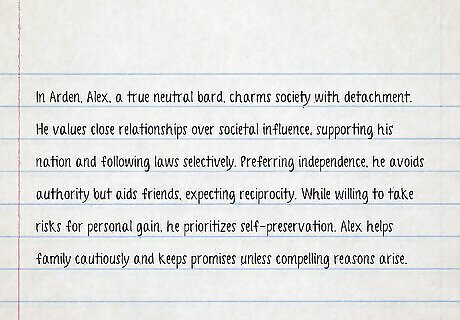
Influence in society A true neutral character’s relationship with society is usually driven by their close relationships. They’re likable but also don’t go out of their way to improve society as a whole. They help their friends and won’t harm others for personal gain, but also aren’t concerned with less fortunate people. For example, a true neutral character might: Support their nation because it protects their way of life. Follow the law when it makes sense to do so. Keep out of politics unless forced. Avoid positions of authority or influence over other people. Provide for friends but expect repayment or a favor in return. Take risks if there’s a significant benefit to it. Help family members, but not if there’s personal harm or discomfort involved. Keep their promises most of the time until they have a compelling reason not to.
True Neutral vs. Other Alignments
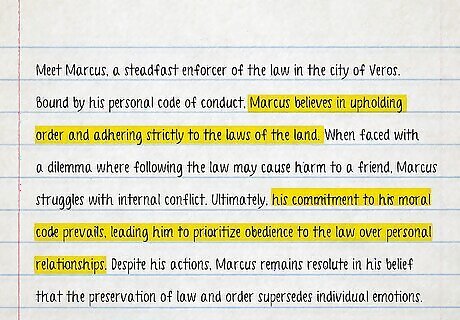
Lawful Neutral Lawful neutral characters believe in maintaining a strict moral code of conduct—although that could be actual laws or a personal standard. They base all moral decisions on their code and always try to work within laws or hierarchies if that’s what they believe in. By comparison, true neutral characters don’t feel compelled to obey a particular code no matter what. For example, a lawful neutral character might follow the law knowing it would hurt a friend, whereas a true neutral character would do their best to protect that friend, so long as they won’t be harmed in the process.
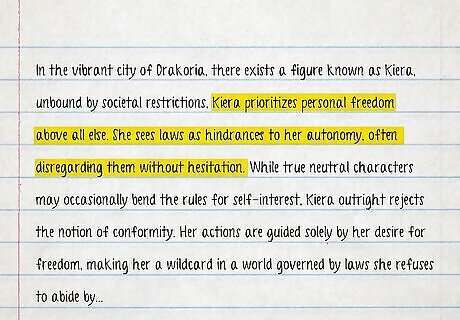
Chaotic Neutral While chaotic neutral and true neutral characters are similar, the main difference is their perspective on laws. Chaotic neutral characters don’t see the value in laws or any kind of societal restriction, and protect their personal freedom above all. While true neutral characters also believe in personal freedom, they do their best to work within the law when it’s in their best interest. For example, a true neutral character probably wouldn’t want to break the law but might do so occasionally if it would unquestionably serve their self-interest. Normally, however, they consider it easier to play by the rules. Chaotic neutral characters don’t see the point of following someone else’s rules, or even pretending to for convenience; to them, laws are more or less useless.
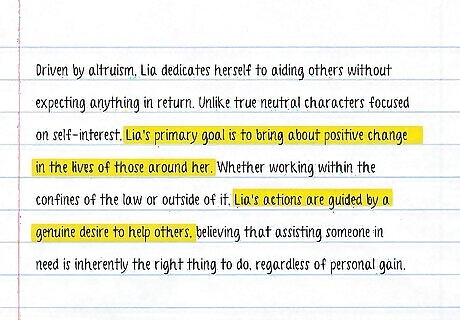
Neutral Good The similarity between neutral good and true neutral characters is their belief that it’s acceptable to use any means necessary to achieve their goals (either working within or outside the law). However, their goals are very different. Neutral good characters are altruistic, selflessly working to help others, while true neutral characters are mainly focused on their own interests and problems. For example, a true neutral character would help someone and expect that gesture to be reciprocated, whereas a neutral good character would believe that helping someone is simply the right thing to do.
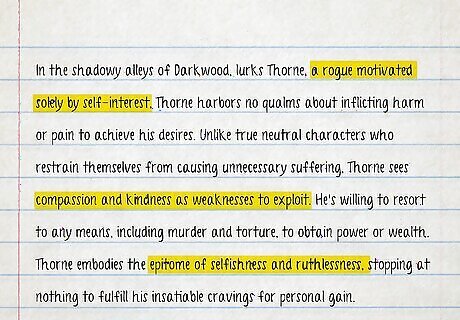
Neutral Evil True neutral and neutral evil characters are both largely motivated by self-interest and don’t have a preference between law or chaos. However, true neutral characters are more restrained; they want to benefit themselves, but not to the point of causing unnecessary harm or pain to others. Neutral evil characters, on the other hand, have no qualms; they’ll do anything to get what they feel they deserve. For example, true neutral characters aren’t murderers or assassins unless somehow pushed into it (for example, getting vengeance for a loved one). They understand that compassion and kindness have benefits, too. Conversely, neutral evil characters would absolutely kill and torture others to get something they wanted (like power or money).




















Comments
0 comment